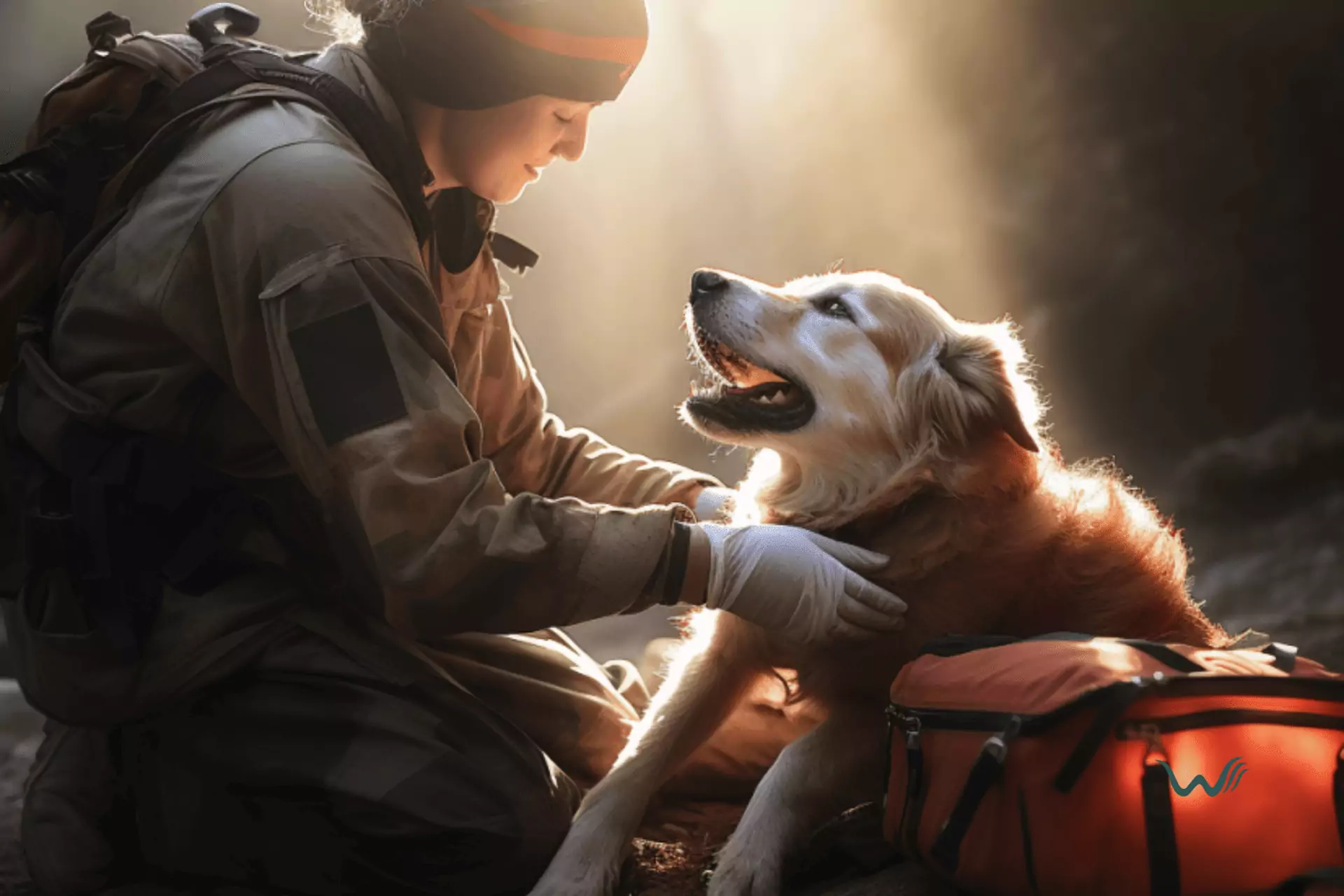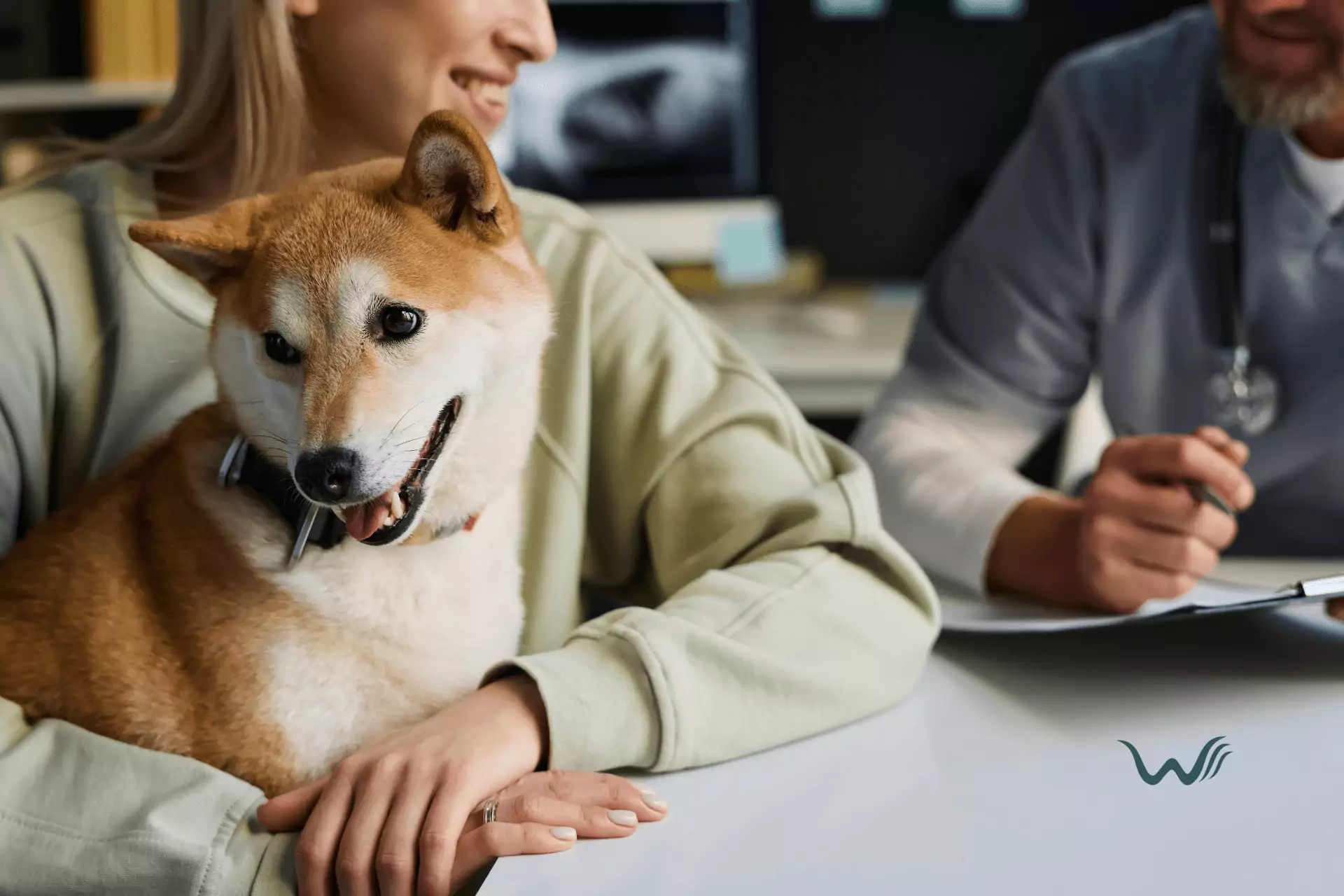

Everything You Should Know about ESA First Aid
by Haley Mills
Last updated: January 30, 2024
Verified and Approved by:
Angela Morris,
MSW, LCSW
Fact Checked

Emotional Support Animals (ESAs) are crucial in providing comfort and companionship to individuals struggling with mental health issues. These furry companions offer unwavering support and love, significantly impacting the well-being of their owners. However, just like humans, ESAs can also face health emergencies and accidents. That’s why ESA owners need to be knowledgeable about first aid techniques specifically tailored for their beloved animals.
Understanding the importance of first aid for ESAs is vital in ensuring their safety and well-being. This article aims to provide comprehensive information on handling emergency situations with your ESA. From recognizing the signs of distress to administering basic first aid techniques, we will cover everything you need to know to be prepared for any unforeseen circumstances. Additionally, we will discuss the importance of creating an emergency first aid kit specifically designed for your ESA and the resources available to seek professional help in times of need. By being well-informed and equipped with the necessary skills, you can ensure the health and safety of your ESA, further strengthening the bond between you and your furry companion.
Understanding the Role of Emotional Support Animals (ESAs)
Now that you understand the basics of ESA first aid let’s delve into the important role that Emotional Support Animals play in providing emotional support and assistance to individuals in need. Emotional Support Animals, or ESAs, are animals that are prescribed by mental health professionals to individuals with emotional or psychological disabilities. These animals are not considered pets but companions that offer their owners comfort and support. ESAs can be any type of animal, including dogs, cats, birds, or even rabbits. They are chosen based on their ability to provide emotional support and their compatibility with the individual’s lifestyle and needs.
The role of an ESA is to provide emotional support and assistance to their owners. These animals are trained to recognize and respond to the emotional needs of their owners, providing comfort and companionship when it is needed most. They can help individuals with anxiety, depression, PTSD, and other emotional or psychological conditions by providing a sense of calm, reducing stress, and improving overall well-being. ESAs can also help individuals with social anxiety or other social difficulties by acting as a bridge between them and others, helping to reduce feelings of isolation and loneliness. Overall, Emotional Support Animals play a vital role in improving their owners’ mental health and emotional well-being.
Recognizing the Importance of First Aid for ESAs
Understanding the significance of immediate assistance to your emotional support animal is crucial in ensuring their well-being and safety. Just like humans, animals can also experience accidents or injuries requiring prompt attention. Knowing how to administer first aid to your ESA can significantly impact their recovery and overall health.
First aid for ESAs includes basic techniques such as cleaning wounds, applying bandages, and providing CPR if necessary. It is important to have a well-stocked first aid kit specifically designed for your animal’s needs, including items like disinfectant, gauze pads, and a pet-specific CPR mask. Additionally, being familiar with common signs of distress or injury in your ESA can help you quickly identify when they may need immediate assistance.
In conclusion, recognizing the importance of first aid for emotional support animals is essential for any ESA owner. By understanding basic first aid techniques and having the necessary supplies on hand, you can ensure the well-being and safety of your beloved animal companion. Being prepared to provide immediate assistance in case of accidents or injuries can make all the difference in their recovery and overall health.
Essential First Aid Techniques for ESA Owners
Learn these crucial techniques to provide immediate assistance to your ESA in times of need. First and foremost, knowing how to perform CPR on your ESA is important. CPR stands for cardiopulmonary resuscitation and is a life-saving technique that can be used when your ESA is not breathing, or their heart has stopped. To perform CPR on your ESA, check the airway for any obstructions. If there are no obstructions, tilt their head back to open the airway and begin giving them rescue breaths. After giving two rescue breaths, you will need to perform chest compressions. Place your hands on their chest and push down firmly at a rate of 100-120 compressions per minute. Alternate between giving rescue breaths and chest compressions until help arrives or your ESA starts breathing on their own.
Another essential technique to learn is how to control bleeding. In the case of a bleeding wound, it is important to apply direct pressure to the area using a clean cloth or bandage. Maintain pressure until the bleeding stops or professional help arrives. If the bleeding does not stop, you may need to apply additional pressure or use a tourniquet. However, it is important to remember that tourniquets should only be used as a last resort and should not be left on for an extended time. Additionally, being familiar with the signs of shock and how to treat it is important. If your ESA is experiencing shock, they may appear weak, have pale gums, and have a rapid heartbeat. To treat shock, you should keep your ESA warm, elevate their hindquarters, and seek veterinary assistance as soon as possible. By learning these essential first-aid techniques, you will be better prepared to provide immediate assistance to your ESA in times of need.
Creating an Emergency First Aid Kit for Your ESA
Make sure to assemble a complete emergency first aid kit for your ESA so you’re prepared for any unexpected situations. Your kit should include essential items such as bandages, gauze pads, adhesive tape, antiseptic wipes, and scissors. These items will come in handy for treating minor cuts, scrapes, or wounds that your ESA may experience. Additionally, it’s important to include any specific medications or supplies that your ESA requires, such as allergy medication or insulin for diabetic animals.
In addition to basic first aid supplies, consider including items that can help in emergencies. For example, a muzzle can be useful if your ESA becomes agitated or aggressive and needs to be restrained for their safety and the safety of others. It’s also a good idea to include a blanket or towel to provide comfort and warmth for your ESA, especially if they are injured or in shock. Remember to regularly check and replenish the items in your emergency first aid kit to ensure that everything is up to date and in good condition. By being prepared with a well-stocked kit, you can provide immediate care to your ESA in case of an emergency.
How can ESA First Aid Training Help with Training for Anxiety and Depression in ESAs?
ESA first aid training provides crucial tips for ESA training that can be beneficial in helping those suffering from anxiety and depression. With the right techniques and knowledge, ESA owners can learn how to support and comfort their ESAs during times of distress, providing essential emotional support.
Seeking Professional Help and Resources for ESA First Aid
Find professional assistance and valuable resources to support your ESA’s first aid needs. When it comes to the health and well-being of your emotional support animal (ESA), it is important to have access to professional help and resources. While you may be able to handle minor first-aid situations on your own, there may be times when you need the expertise and guidance of a trained professional. It is recommended to have a veterinarian or an animal first aid specialist on hand who can provide immediate assistance in case of emergencies or more serious injuries. They can guide you on how to administer first aid and help you determine when it is necessary to seek further medical attention for your ESA.
In addition to seeking professional help, there are also valuable resources available that can assist you in learning more about ESA first aid. Online platforms, such as websites and forums, can provide you with information on basic first-aid animal first-aid techniques and specific guidance for ESAs. These resources may include step-by-step instructions, videos, and articles that cover various first-aid scenarios. It is important to ensure that the information you access is from reputable sources, such as veterinary associations or animal welfare organizations, to ensure accuracy and reliability. By having access to professional assistance and reliable resources, you can ensure that you are prepared to handle any first-aid situation that may arise for your ESA.
Final Words on ESA First Aid
In conclusion, understanding the role of emotional support animals (ESAs) and recognizing the importance of first aid for them is crucial for ESA owners. By learning essential first-aid techniques and creating an emergency first-aid kit for your ESA, you can be prepared for any potential health emergencies that may arise. Additionally, it is important to seek professional help and resources for ESA first aid, as they can provide valuable guidance and support in caring for your ESA’s well-being.
Overall, taking the necessary steps to ensure the safety and health of your ESA is essential. Knowing first aid techniques and having a well-stocked emergency kit, you can be prepared to handle any emergency situation. Remember to also rely on professional help and resources when needed, as they can provide expert guidance and support. By prioritizing your ESA’s well-being, you can provide them with the love and care they need to thrive.
Certify Your Emotional Support Animal Today

Why You Can Rely on Us?
At Wellness Wag, we believe your pet deserves care rooted in both science and compassion. Each article is carefully researched, written in clear language for pet owners, and then reviewed by qualified professionals to ensure the information is evidence-based, current, and practical for real-life care. Our goal is to help you feel confident in making informed decisions about your pet’s health and well-being.
Reviewed by
Angela Morris, MSW, LCSW
Angela is a licensed clinical social worker with 20 years of experience in patient advocacy and community mental health. She has assisted numerous clients with ESA evaluations and brings a deep understanding of disability accommodations, ensuring that all information is accurate, supportive, and practical.

Written by :
Haley Mills
Last Updated :
January 30, 2024












